Following my last post on the seven Glen Etive hydro schemes (see here) I found that Mountaineering Scotland had issued an excellent news release prior to the site visit by Councillors on Monday (see here). This does not appear to have been picked up by the mainstream media. What did get coverage in the Press and Journal and in an online publication called Energy Voice (see here) was that “locals” – it did not say who qualified for this description – wanted more say in the decision process and that they had been promised £34k a year. This post takes a look at who will really benefit from these schemes before the Planning Committee today.
You can catch the planning committee webcast – a really great example of openness which should be followed by both our National Parks – live from 10.30 Wednesday or afterwards (see here).
Socio-economic impact of the 7 hydro schemes
The Committee Report has a section on the socio economic impact of the schemes which makes no mention of ANY community benefit payments:
Socio-economic impact
8.9 The submitted EIAR recognises the importance of tourism to the local and national economy, however there is no direct assessment of the predicted impact of the development on tourism. There are a high number of visitors (tourists and recreational users) to Glen Etive for varied reasons – walking, sightseeing,canoeing, photography etc – and it is very difficult to predict how many of these
visitors would stop coming to the Glen as a result of the construction works, and what the loss would be to the local economy as a result. Given the temporary nature of the disturbance (over a two year period), the mitigation measures proposed and as visitors are generally in the Glen for a purpose (for example climbing a particular Munro, canoeing a particular route or driving down the Glen as
part of a wider visit to the area), it is considered that the impact on the economy will not be significant in the local or national context. The EIAR highlights there will be direct and indirect short term positive effect on the economy during the construction phase from the use of local services and suppliers. Not referred to are the benefits to the Estate owners of income from the hydro schemes which will help to sustain local employment in the Glen.
Perhaps Dickins Hydro has only offered this to the local community recently as a result of the strong opposition across Scotland to the proposals? If so, that would be a deeply cynical act.
For £34k is chickenfeed compared to what these schemes are likely to make for Dickins hydro and the local landowners. I have just been looking at the latest accounts of Ben Glas Power (see here) which operates the 1.6 megawatt scheme that has affected the Eagle Falls at the head of Loch Lomond and is a similar size to the 1.64 MW Allt a Chaorainn Scheme in Glen Etive. It earned £703,847 in payments for the year to September 2018 despite, it appears, not running at full capacity because of a commitment to maintain the waterfall during the daytime. Scaled up for Glen Etive, which will produce c6.5 MW in all, one could expect earnings of c£3-3.5m across the 7 schemes. In other words the Community are being offered just 1% of earnings. They would be much better off with a proper National Park or even the equivalent of England’s Areas of Outstanding Natural Beauty which receive some funding unlike our National Scenic Area.
In terms of jobs, the Ben Glas accounts report that the company has no employees and my understanding is the Falloch schemes as a whole have created one part-time post. Glen Etive is unlikely to be much different.
What the Ben Glas accounts do show is who really profits from these schemes. The Company made £238,651 profit after tax and paying interest on loans. That is over a third of turnover. This suggests that the profits from all 7 Glen Etive hydro schemes could be in the region of £1m a year. Offering £34k of this to the local community is hardly a generous offer.
Moreover, while I have no information about the model under which the hydro schemes will be operated, it is certain that Dickins Hydro or any future operator will have agreed leases with the two estates concerned should the hydro go ahead. The Ben Glas accounts give some indication of the sums involved:

This shows the Glen Falloch Estate is due to paid almost £700k in future from just this one scheme. The Dalness and Glen Etive estates, which own the land on which these hydro schemes would be located, may not have been able to negotiate such a good deal but if they have that would be around £3m shared between them.
That is a sizeable proportion of the purchase price of the Dalness Estate which was reported to have been bought for £2.7m in 2014. What price our landscape?
Estate and Developer hyprocrisy
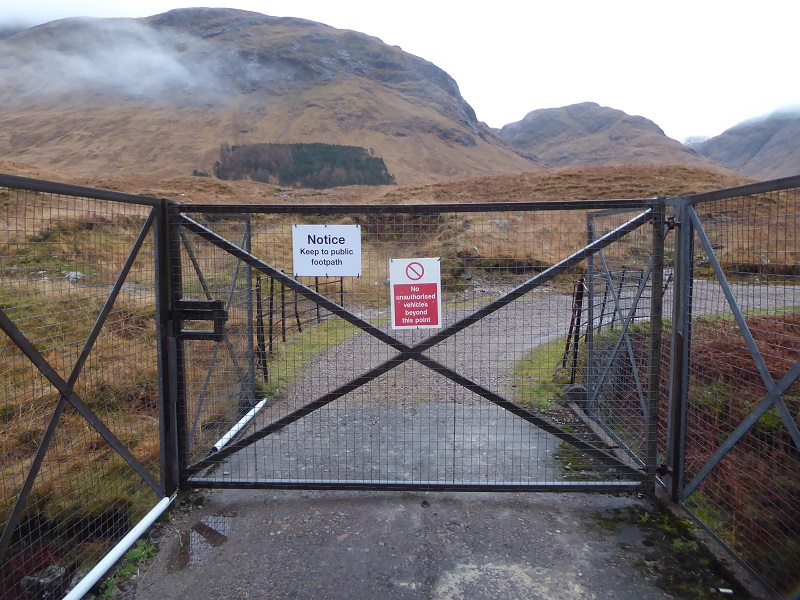
When I visited the Allt a Chaorainn before Xmas I was met by a barrage of access signs that contravened access rights. The former fortified bridge over the River Etive by the Allt Chaorainn may now be unlocked and its barbed wire removed but there was still an unlawful notice telling people to keep to the path.
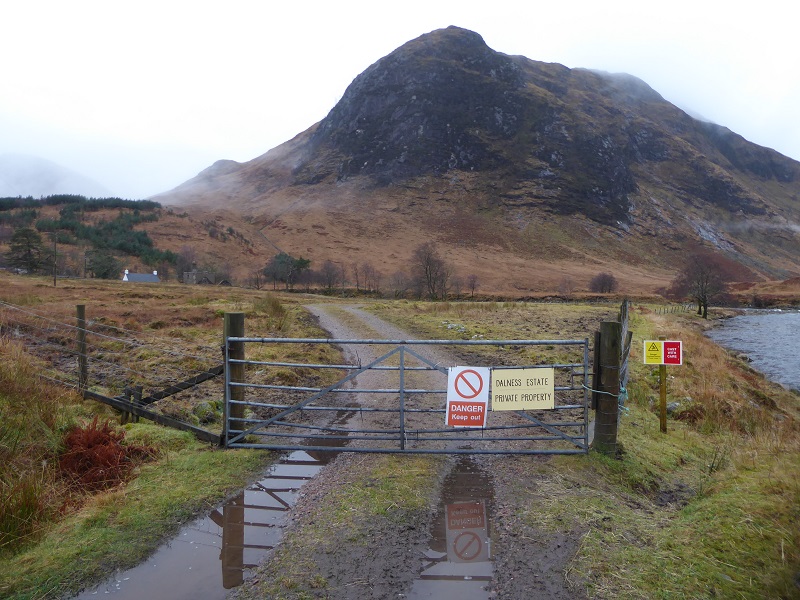
There was no danger in this field, which I walked through on my way back down, following the line of the proposed pipeline and to look at the site of the proposed powerhouse. And if there had been, it should have been specified.
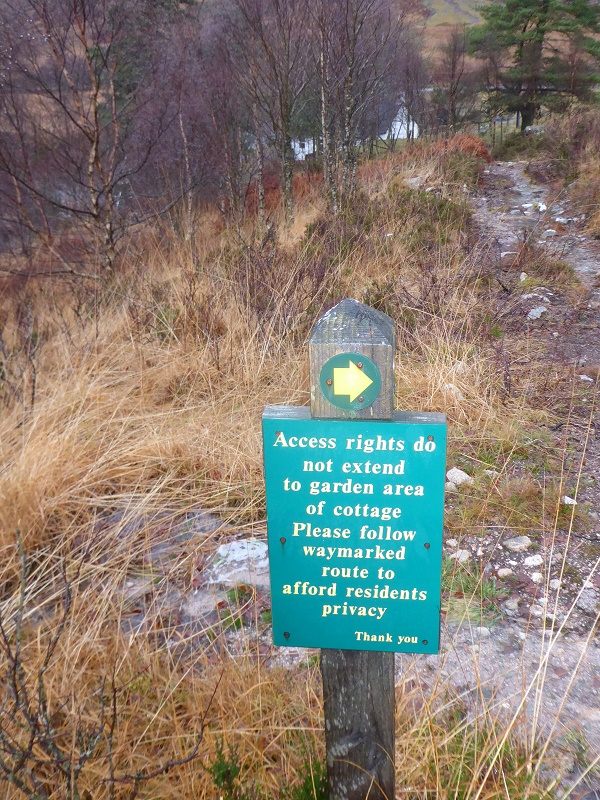
At first sight, the third sign appears more reasonable. The trouble is it is placed to deter people from using the bridge over the Allt Chaorainn (just visible on the left) used to access Beinn Ceitlein which is outside the curtilage of the cottage. What’s more, the cottage does not appear to have human residents.
I understand the signs were still up last week. It would be interesting to know if they were still there at the time of the Committee visit because, if so, Councillors might picked up this statement in the Committee Report:
“The proposed hydro scheme is located at the top end of Glen Etive, and is the closest of the schemes to Rannoch Moor and the A82. The Allt Chaorainn is a focussed glen with high hills on each side and behind. At the foot of the glen are two houses, one habitable and one badly fire damaged. They are accessed by an existing junction onto the public road and a bridge [first photo] crossing of the River Etive and existing private [second photo!] track, which is also proposed to serve the proposed hydro scheme. To the east of the site is the popular ‘Skyfall’ view point on the public road. This section of the River Etive is very popular for canoeing/kayaking. There is an existing public right of way from the bridge to the river and the glen beyond. A previous re-route of the footpath away from the existing houses has left a poor route for walkers and kayakers accessing the river. The proposal includes the replacement of the bridge over the River Etive and a new section of public footpath to join with the river footpath. Going over the bridge, the route will follow the existing track to the houses. It will then spur off to the left before reaching the houses, where the powerhouse is to be situated. The new footpath will spur to the right after the powerhouse and the penstock and temporary construction track will cross the moorland to the left and run up the glen parallel to the river. The penstock gently climbs the glen at the base of the adjoining hill until it reaches a ‘T’ in the river, where the Allt Coire Ghiubhasan joins the Allt Chaorainn. This is where the intakes are proposed. Walkers routes continue on up these deeper glens.”
Yes! The Developer is now proposing a new footpath to benefit walkers, presumably with the approval of the estate, over the ground where, until last week at least, the estate was unlawfully trying to deter access! This ploy is just as cynical as offering £34k to the local community. Whether the Developer will be able to buy off canoeists remains to be seen as negotiations are reported in the Committee Report to be continuing.
The Dalness Estate
Besides the Allt Chaorainn signs and all the unlawful No Camping signs in the glen, there is a large cluster of relatively new Private Property signs around Dalness Lodge on land where there is a legal right of access. Duncan Ban MacIntyre, the Gaelic poet and gamekeeper, who lived in the glen would have been appalled.
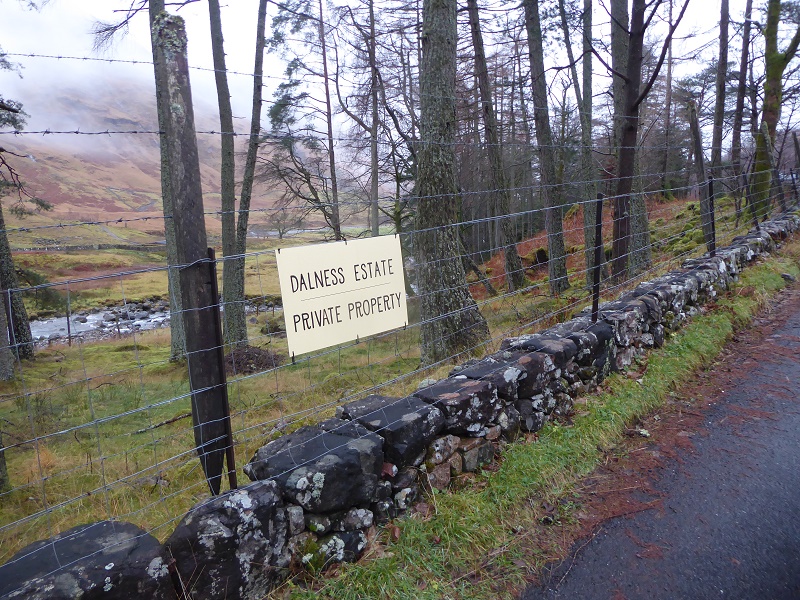
Why put up these signs in any case when the land on both sides of the fence is now “private”?
The Dalness Estate appears to be owned by Charles and James McAlpine through a company, Dalness Estates Ltd, which they set up in June 2014 at the time they purchased the estate. The accounts show it employs 3 people. On the Companies House website James McAlpine’s occupation is given as investor while his brother, Charlies Rho McAlpine, is described as a restauranteur with an address in Korea. Companies House records also show that the estate has been partly financed through what appears to be a £4m loan from C Hoare and Co. This was secured with a charge lodged over 34-35 Dean St, a very expensive property in London. 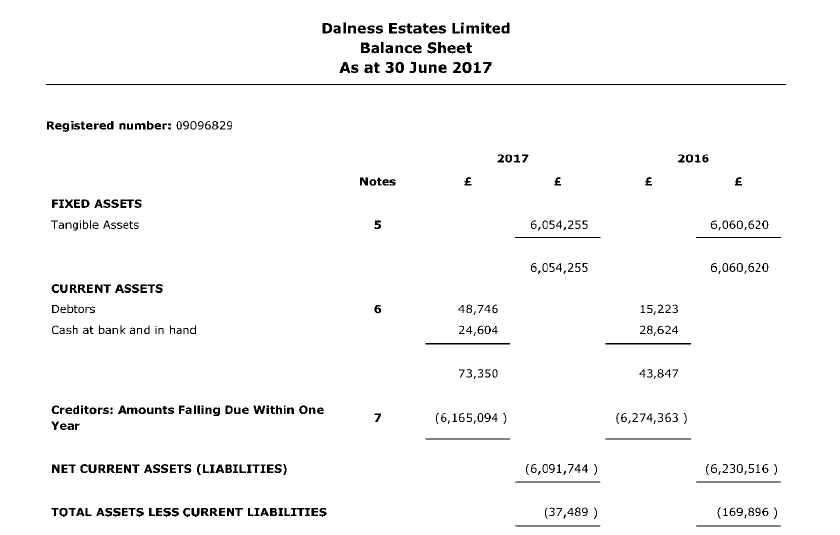
It appears that the brothers invested a significant amount in the property, which was reputedly bought for £2.7m and is now valued at over £6m. Most of the investment appears to have been in the lodge which is now let for luxury sporting purposes (see here) rather than the landscape or other local facilities. The 2019 Rates, 7 nights for 12 guests, are given as follows:
Sep and Oct £12,600
Nov to May £8,400
Jun to Aug £10,500
Minimum 3 night stay from £3,600
The contrast with the way most other forms of outdoor recreation enjoy the glen, by camping, is striking. There is of course almost no reasonably priced accommodation in the glen because almost all the land is controlled by the two estates. The signs on the fence say something about wealth and social division.
The power and interests of the landowners explain not only why these hydro schemes are on the table – but does it say about what they care for the landscape? – but also I believe the attitude of the local community.
The Glen Etive hydro and the need for land reform
For the local community have no power and are almost totally dependent on the landowners. If they had power, the Planning Committee might now be considering just one hydro scheme in one of the forest areas from which the local community would derive a lot more income than they are now being offered. Most people who care about the glen would have settled for that. Come to think of it, if Highland Councillors see the “community benefit” as the key issue, maybe the Planning Committee could just approve one scheme with the condition that the Developer matches their current offer of £34k to the local community.
I have been unable to find out the exact permanent population of the glen but I suspect its less than 20 people. Many will live in tied houses, dependent on their employment with the estates and, like all estate workers will work long hours for very little pay. Within this context, its not surprising that some of them may genuinely see the £34k offer as an opportunity. Yet this money is basically coming from the same landowners who are responsible for their current difficulties. If the landowners paid more and gave up land for housing, there would be no need for these schemes. Hence the need for land reform.
Glen Etive should not, in my view, be developed in a way that destroys the character of the glen. It should however be possible to provide more and better housing – the glen once supported far more people before the big sporting estates came along – and better paid jobs than will ever be provided by these hydro schemes or these landowners. That is the real challenge for sustainable development in the Highlands.
There is a fine tradition of radicalism among Councillors in the Highlands, which understands and is committed to tackling land issues. I hope the Councillors on the South Planning Committee draw on that in taking a decision today.
All applications approved. Disgraceful.
This is not the end of the road. The Scottish Government now needs to call in the applications and the public need to put pressure on the landowners to stop trashing their land
Yes, we need land reform. We need a system of Land Value Taxation to capture the uplift in land value, not as a one-off lump sum payment but as an annually recurring charge based on the rental value – indeed the term Annual Ground Rent is more accurate. The landowner does nothing to earn these rental payments, which as Nick’s figures show, can be huge. Rightly or wrongly, these planning decisions are taken in the public name by publicly accountable people and so should benefit the public purse, rather than translating into a windfall gain to the landowner. One of the main driving forces behind these schemes – private profit – would be removed as rental income would be matched by tax liability.
The Etive is one of the best UK rivers for White Water Kayaking. The hydro scheme will impact on this. http://canoescotland.org/news/scas-response-hydro-scheme-proposals-7-glen-etive-tributaries
Twice a day we have a thing called the tide
Every day it comes in
Goes out
Back in
Back out
And all these dummies can come up with is minature hydro schemes
This is your government
This should not be allowed, once the land is destroyed in the favour of the materialistic few it can not be reversed. This is not in the public interest
Is there a mechanism for teh public to put pressure on teh government to call in a planning application such as this? I can’t imagine the landowners will be too bothered by pressure if they have the legal right to proceed.
Yes, the idea of a call-in being floated – “Scottish Ministers normally only intervene in exceptional circumstances and generally only become involved in cases that raise issues of national as opposed to local significance. That said, there is no definitive list of criteria used to decide whether to call-in a planning application; each case is considered on its own merits.”
Nick – should we all be lobbying for this to be called in? Do you reckon it’s best to contact our own MSPs or the ministers directly – Roseanna Cunningham (Environment); Kevin Stewart (Planning)?
John, because it appears that Highland Council has now agreed to consider the applications at a full Council hearing, all Highland Councillors need to be given the opportunity to consider this (there are c70 in all compared to the 9 who attended the Committee and voted 6 for schemes and 3 against) and focus of lobbying/representations should I think be on them. At the same time however there is no harm those Councillors being aware that if they don’t take the right decision there will be a huge protest and strong demands to call this in. There is no harm people who live outside Highland Region contacting their MSPs and the Ministers responsible now. I hope some sort of co-ordinating group to take forward the opposition will be formed next week. Nick
As usual the interests of the monied few ride roughshod over the the rights of the many! As there are no obvious advantages to the community one is left with the question why would local councilors vote in favour?
Rhetorical Question we aĺl know why!!!
Hi Frankie, its important that people appreciate there is a range of views among Councillors. Andrew Baxter, the Councillor on the South Planning Committee whose ward covers Glen Etive, was the Councillor who proposed that the Committee reject the applications for the three schemes on the east side of the Glen in the Wild Land Area. He also raised extensive questions about the development as a whole and made the point at the Committee that the people living in the glen who have been quoted as supporting the schemes do not necessarily represent the community as a whole. We need to give Andrew Baxter and the other Councillors who opposed the 3 schemes, Bill Lobban and Callum Smith, and have been working to get the whole council to consider the schemes our support
Nick, as someone who lives outside Highland Region I have obviously not tried to contact any Councillors, but I have e-mailed my MSP (SNP, alas) and Kevin Stewart in his capacity as Minister with responsibility for planning. No reply from either. Other than Roseanna Cunningham, who else would be worth writing to? I’d thought of the head man at SNH, but I don’t suppose SNH will act (perhaps they can’t act). Anyone else on the political scene?
I think writing to Mike Cantley, the chair of SNH, is a good idea. One of the main problems for local councillors is that when the Scottish Government’s own statutory adviser on landscape does not raise any issues they and the planners assume there aren’t any. The SG usually only calls in planning applications where councillors approve them contrary to advice from public authorities like SNH. Calling on SNH to reconsider their views is therefore a good idea and I think they need to realise how wrong they have got this in the eyes of the public. Mairi Gougeon is Minister for the Environment and reports to both Roseanna Cunningham and Fergus Ewing and has responsibility for Natural Heritage which as far as I am aware includes landscape. Anther non-political organisation worth writing to if you are a member is the National Trust for Scotland – they own part of the glen outside the hydro scheme area so why did they not object as neighbours?
Thanks Jane Meek for the good question and Nick’s response. I had been wondering the same thing i.e what if anything else to do? I wrote to my highland councillors last week asking them to look into the decision, and take action if they think appropriate. I want my councillor to use their own best judgement on applications like these but of course they will be looking to take a lead from the statutory advisor SNH. Given the public outcry I’d like to think SNH might reassess, maybe? The public outrage to this application surely lets SNH know it has the support to push further on its wild land policy? I’m also a National Trust for Scotland member. I would have liked them to have commented on the application as a neighbouring landowner.. thanks again.
John
It is greatly saddening to me that the efforts of those Councillors who had the grit and determination to force the issue of bringing this before the full Highland Council were not, in the end, successful.
For me, as, I imagine for Councillors Baxter and Lobban, the issue revolves around what we understand by the SNH map of wild land. Some argue this is not a ‘designation’ and not therefore of the same status as a National Park, a National Scenic Area, or an SSSI, to name just some such ‘designations’. But what was the point of SNH developing the wild land maps in the first place? Why go to all that trouble, if the whole concept is to be defiled almost at will? We have already seen Monadhliaths Wild Land seriously impaired by wind turbines. Now we have a beautiful and spectacular wild glen in which there was a substantial recreational interest in white water kayaking, where we will now have run of river hydro schemes which will inevitably interfere with the necessary water flow. Extraction into a turbine remains extraction, even if you put it back again downstream. I personally remain not opposed to such schemes per se, but just as there are places – especially offshore, but even occasionally on land, where wind turbines are appropriate, so run of river hydro schemes are only appropriate in the right circumstances. And the ‘community benefit’ in this scheme is utterly laughable. The community could have seen so much more benefit by developing and enhancing the natural assets around them to encourage visitors to stay a while, and could most certainly have made far greater benefit if we had a National approach to small scale run of river hydro which stated in the National Planning Framework that such schemes would only ever be supported if they are community developed, owned and run.